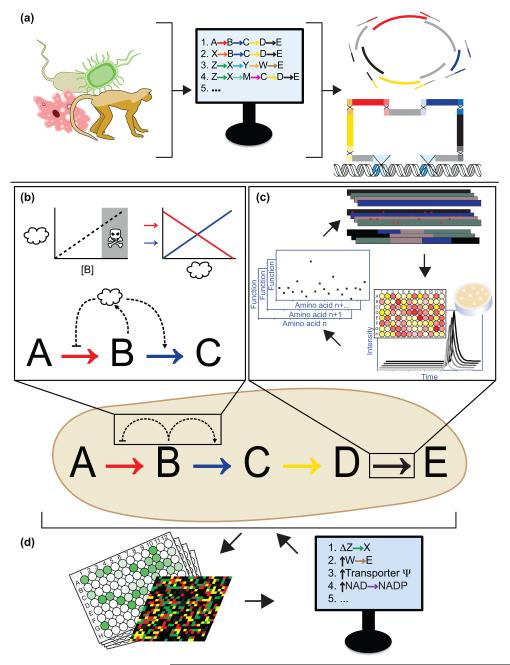Figure 1.
Molecular tools to advance engineering of multi-enzyme biochemical pathways for chemical biotechnology. (a) Genetic and genomic databases are used with predictive algorithms to design pathways, which are then genetically constructed in vitro and/or in vivo. (b) Dynamic control elements allow enzyme expression levels to vary in response to small molecule concentrations. (c) Rounds of diversity generation and screening, informed by machine learning and design of experiment algorithms, generate optimized enzyme variants. (d) Whole cell read-outs provide data for systems level analysis and prediction of specific changes to enable global phenotypic improvements.

